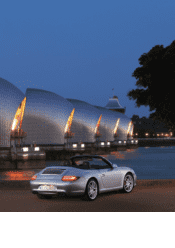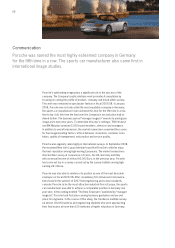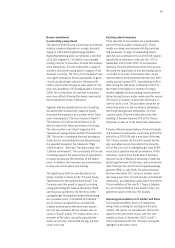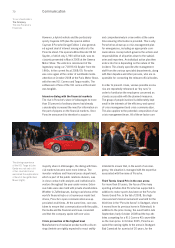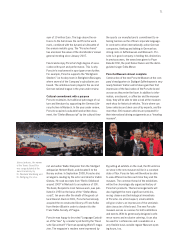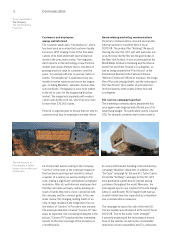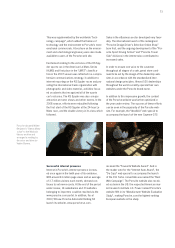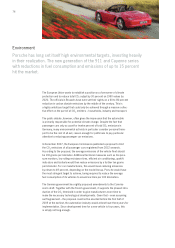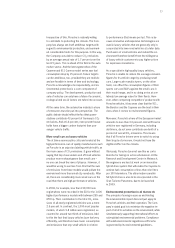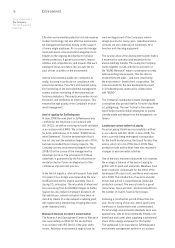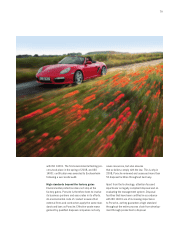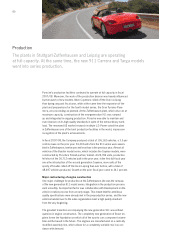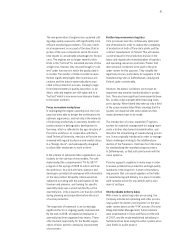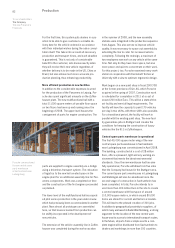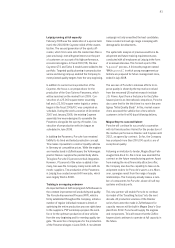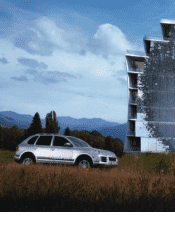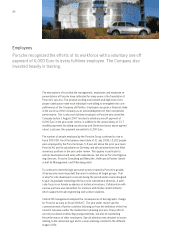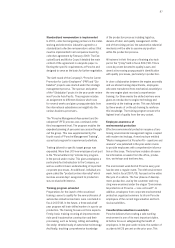Porsche 2007 Annual Report Download - page 80
Download and view the complete annual report
Please find page 80 of the 2007 Porsche annual report below. You can navigate through the pages in the report by either clicking on the pages listed below, or by using the keyword search tool below to find specific information within the annual report.Irrespective of this, Porsche is naturally willing
to contribute to protecting the climate. The Com-
pany has always set itself ambitious targets with
regard to environmental protection, and earmark-
ed considerable funds for this purpose. In this way,
the Company was able to reduce CO2emissions
by an average annual rate of 1.7 percent over the
last 15 years. This is ahead of the field in the auto-
motive sector. And the latest generation of the
Cayenne and 911 Carrera model series saw fuel
consumption drop by 15 percent. Future targets
can be ambitious, too, provided they are realistic
and are feasible in terms of time and technology.
Porsche acknowledges its responsibility, and en-
vironmental protection is a core component of
company policy. The development, production and
sale of vehicles can only have a future if economic,
ecological and social factors are taken into account.
At the same time, the automotive industry’s share
of emissions must be put into perspective. The
public debate should reflect the fact that power-
stations contribute 43 percent of Germany’s CO2
emissions. And at 14 percent, even private house-
holds have a bigger carbon footprint than pas-
senger vehicle traffic.
More small cars as luxury vehicles
The at times severe public criticism leveled at the
high-performance cars of quality manufacturers such
as Porsche is as unjust as labeling vehicle traffic as
the main cause of CO2emissions. It goes without
saying that top class sedans and off-road vehicles
produce more exhaust gases than small cars –
no one can break the laws of physics. However, it
would be wrong to surmise from this that the sum
of emissions from these models would pollute the
environment more than small city run-abouts. After
all, there are considerably more small cars on the
road than there are high-performance vehicles.
In 2006, for example, less than 199,000 new
registrations were recorded in the EU for the 1,000
highest-performance models with between 255 and
655 hp. Their contribution to the total CO2emis-
sions of all newly registered vehicles was a mere
2.5 percent. In contrast, the 1,000 most popular
models, of which 9.8 million were registered, ac-
counted for around two thirds of emissions. Add
to this the fact that luxury vehicles burn fuel very
efficiently, and therefore have lower consumption
and emissions than any small vehicle in relation
to performance (that means per hp). This is be-
cause innovative and expensive technologies are
used in luxury vehicles that are generally only in-
corporated into lower-end vehicles at a later date.
Purchasers of small vehicles and indeed the en-
vironment therefore benefit from the willingness
of luxury vehicle customers to pay higher prices
for expensive innovations.
As a specialist in high-quality luxury vehicles,
Porsche is unable to reduce the average emission
figures for its vehicle range by producing small
cars. Large-scale manufacturers, on the other
hand, can offset the consumption figures of their
sports cars and SUVs against the small cars in
their model range, and in so doing arrive at a re-
latively low average value for their fleets. How-
ever, when comparing competitors’ products with
Porsche vehicles, it becomes clear that the 911,
the Boxster and the Cayenne are the best in their
class when it comes to environmental figures.
Moreover, Porsche’s share of the European market
amounts to less than 0.3 percent. And all Porsche
vehicles ever registered in Germany, including
old-timers, do not even contribute one-tenth of a
percent of overall CO2emissions. This means
that if all Porsche drivers were to switch to using
their bicycles tomorrow, it would not have the
slightest effect on the climate.
Obviously, Porsche does not see this as carte
blanche for taking no action whatsoever. At the
Research and Development Center in Weissach,
the engineers are hard at work on an innovative
hybrid drive system that will enable the Cayenne to
achieve fuel consumption of less than nine liters
per 100 kilometers. The ultra-modern parallel-
full hybrid drive is also to be incorporated in the
Gran Turismo Panamera, due to be launched
in 2009.
Environmental protection in all that we do
The principle of saving resources and limiting
the environmental impact does not just apply to
Porsche’s vehicles and their operation. The Com-
pany’s stated goal is to minimize the negative im-
pact of all of its activities on the environment, while
simultaneously supporting international efforts to
solve global environmental problems. Compliance
with valid environmental regulations at Porsche
is governed by its environmental guidelines.
77


